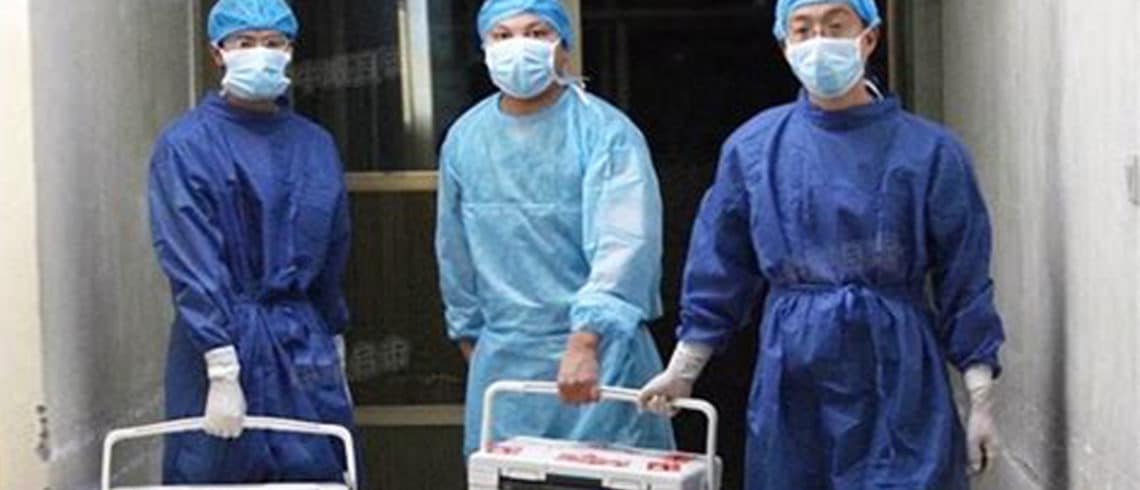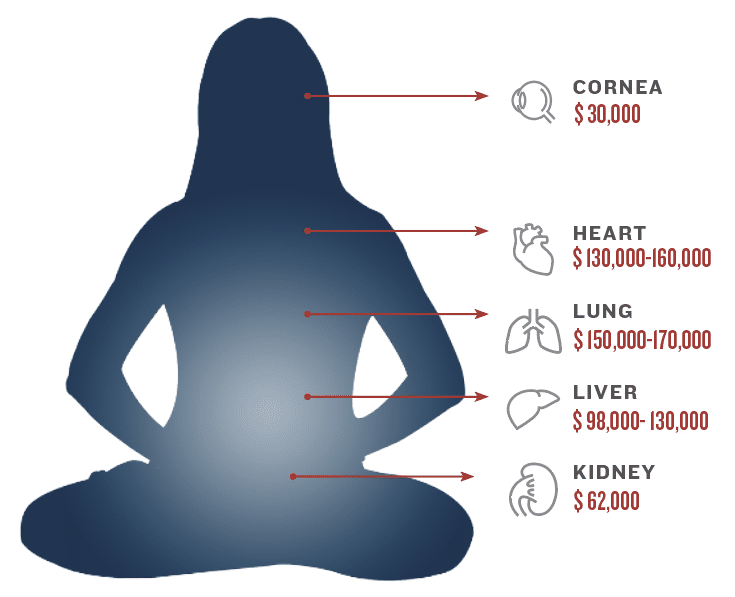
Forced Organ Harvesting
A growing body of evidence indicates that Chinese hospitals have been colluding with the country’s police in a nefarious scheme known as “organ harvesting.”
They hold prisoners of conscience against their will, often illegally, examine them for organ compatibility, and then systematically remove their healthy organs to supply transplants for a booming organ transplantation industry.
Their bodies are cremated, according to eyewitnesses.
The vast majority of prisoners of conscience targeted in this manner are believed to be Falun Gong practitioners — possibly running into tens of thousands annually, according to estimates by Ethan Gutmann, an investigative journalist, David Matas, an international human rights lawyer, and David Kilgour, a former Canadian member of parliament, who published their findings in 2016.
Allegations of mass murder of Falun Gong practitioners for organs have been made since 2006. With every year that has passed since — and in particular over the last few years — more evidence has emerged supporting the allegations. The methodologies used to analyze the mass of evidence have become more robust, and concerns have become increasingly mainstream. Meanwhile, the position of the Chinese regime and its defenders, who seek to deny the claims, has become increasingly untenable.

Forced organ harvesting has been committed for years throughout China on a significant scale.
This year, a number of developments are swiftly raising awareness of this issue and sounding alarms.
Foremost among these is the Independent Tribunal into Forced Organ Harvesting of Prisoners of Conscience in China, chaired by the eminent British barrister and professor, Sir Geoffrey Nice QC. Nice was the prosecutor of Slobodan Milošević at The Hague and subsequently worked on cases before the permanent International Criminal Court. The Tribunal consists of a group of experts from a variety of fields who evaluated the evidence of organ harvesting in China and rendered a judgement as to whether crimes against humanity have been committed.
After first reading evidence for about nine months before holding three days of hearings in London, in December 2018, the tribunal issued an interim judgment that stated: “The Tribunal’s members are all certain — unanimously, and sure beyond reasonable doubt — that in China forced organ harvesting from prisoners of conscience has been practiced for a substantial period of time involving a very substantial number of victims.”
The matter of whether — and in what volume — Falun Gong and other prisoners of conscience have been killed for their organs, has occupied a somewhat awkward place for world governments, major human rights organizations, and major media corporations ever since the allegations surfaced in 2006.
Millions of people around the world, including prominent experts, have seen documentaries like Human Harvest or Hard to Believe, have read the reports, and have concluded that such crimes against humanity have indeed taken place. But the matter is more complex for the foreign ministries of Western countries. If they were also to conclude that these crimes have happened, they would have to determine what to do about it.
The acts alleged are equivalent to any of the major crimes against humanity of the 20th century, if not in scale, then certainly in severity. It is possible that global exposure and acknowledgment that these crimes have taken place, and are likely still taking place in China, would raise major questions about the legitimacy of the ruling Communist Party, and compel a strong response from governments.
China’s Dubious Data
In response to the increasing overseas pressure, Chinese transplant officials promised that in 2015 they would no longer source organs from death-penalty prisoners. This claim was largely accepted by the international transplantation establishment. Subsequently, Chinese officials became members of the World Health Organization’s organ transplantation task force, and Chinese surgeons continued publishing in Western medical journals and presenting papers at conferences.
But new scientific research is calling into question these claims of reform.
A paper titled “Analysis of Official Deceased Organ Donation Data Casts Doubt on Credibility of China’s Organ Transplant Reform” finds that China’s data follows an arbitrary growth formula — specifically, a quadratic equation — extraordinarily closely. Currently undergoing peer review, the paper is authored by Matthew Robertson, a doctoral student at the Australian National University and research fellow with the Victims of Communism Memorial Foundation; Dr. Raymond L. Hinde, a statistician; and Dr. Jacob Lavee, a cardiac transplant surgeon and professor
of surgery.
The meteoric rise in transplant operations in China directly correlates to the meteoric rise in Falun Gong practitioner detainees. In Falun Gong, the Chinese regime suddenly had a near-endless supply of organs to draw from.
The claim of such incredible smoothness of growth is in contrast to the highly contingent nature of voluntary deceased organ donation, where eligible donors only become available at random, and their family members often decline to consent. When compared to comparable data from 50 other countries for goodness of fit to the same type of model, none come close — precisely because real transplant data does not tend to look almost exactly like a mathematical model. This raises the question of whether China’s data actually represents real organ donation activity taking place across the country or was simply fabricated by using a model as a template.
To test the hypothesis of data falsification suggested by the initial analysis, the authors compared the data to that generated by the Red Cross, both centrally and locally, and then compared this data to hospital data in a number of provinces. They discovered that there were multiple anomalies in all of the datasets, many of which could only be explained by human-directed manipulation.
In one case, the Red Cross data claimed that Chinese hospitals had obtained 21.33 organs per donor for a period of about two weeks — a clearly impossible claim. The authors stated, “The manufacture and manipulation of three datasets is indicative of a deliberate, elaborate, and systematic process of falsification that appears to have been intended to create a misleading impression about the successes of China’s voluntary organ donation program.”
The finding of systematic falsification of official organ-donation data raises numerous questions about China’s organ transplant system — including both the real magnitude of the voluntary system claimed by officials, as well as the actual transplant activity that goes on beyond that system.
Evidence of Killing Falun Gong Practitioners for Organs
The Chinese authorities have admitted to having harvested organs from death-row prisoners for many years, and this is widely accepted as fact in Non-Govermental Organization and diplomatic circles. This refers to criminal prisoners who have been sentenced to death by courts for (in most cases) violent crimes.
But the allegations now being discussed go beyond that. The allegations are that Chinese authorities, including those affiliated with military and paramilitary hospitals, have been extrajudicially killing Falun Gong practitioners and other prisoners of conscience, those guilty of no other crime than belonging to a religious or ethnic identity that the Party has targeted for destruction.

One of the problems in gaining the widespread acceptance of this allegation has been that, for some years now, there has been so much evidence of a complex character, and an unwillingness in some sectors to consider the evidence. The primary source materials that must be marshaled, parsed, and assembled into arguments are often in Chinese, typically complex, and sometimes difficult to even find. Moreover, one piece of evidence only takes on significance in the context of other pieces.
The argument can be summarized as follows:
Prior to 2000, organ transplantation in China was a relatively niche medical treatment, primarily reserved for Communist Party officials.
The source of organs was almost exclusively prisoners who had been found guilty of capital crimes and sentenced to death (hereafter referred to as “death-row prisoners”), though Uyghurs and some political prisoners were also subjected to organ harvesting.
From 2000 onward, a tectonic shift began in China’s transplant sector. This is evidenced by a massive expansion in transplant capacity and capability — as measured by metrics such as these:
- The number of hospitals performing transplant surgeries
- Beds devoted to transplants in those hospitals
- The number of doctors and nurses trained in transplant medicine (many of whom received their training overseas)
- Improved patient survival times
- Significant expansion in basic and clinical research in transplantation biology and immunosuppressive medicines
- The establishment of numerous transplant centers in hospitals
- The growth of the domestic immunosuppressant manufacturing industry via state subsidies
- The variety of organ transplants performed (as measured by organ type and surgical method)
- The sheer number of transplants performed
Alongside this growth in transplants performed, there was also the rise of “on-demand” transplants. This means waiting times of mere weeks for patients to receive transplants, or in many cases, mere days or hours.
In short, the great shift post-2000 was that many more transplants were being done and much faster.
These developments took place even as the primary official source of organs that was supposedly supplying the system — death-row prisoners — went into decline. This trend is documented extensively in the literature on the application and law surrounding the death penalty in China. The number of judicial executions, on average, declined every year of the decade beginning in 2000. In 2007, in particular, it “dropped precipitously,” according to an unnamed Chinese security official,1 after death-penalty review was recentralized under the Supreme People’s Court on Jan. 1, 2007.
These two opposing trends — a rapid and significant expansion of organ transplants and shorter wait times for them, even as the official source of organs declined — clearly demand an explanation.
Organs must come from somewhere, and the official explanation does not explain the source. The main preliminary conclusion one can draw is that during this period, there was some other source of organs beyond the officially claimed source of judicially executed prisoners. As of 2009, there were only about 120 cumulative voluntary, deceased organ donors in the whole country.2
Given that China had no voluntary organ transplantation system during this period of declining judicial executions, which began in 2000, the source of organs could not have been voluntary donors.
In attempting to identify the other population that must have been used, it becomes clear that by far the most plausible organ source — indeed the only explanation posited so far — is prisoners of conscience who are executed extrajudicially for the purpose of organ extraction and die in the process of organ extraction itself.
There is a great deal of evidence indicating that this is precisely what happened, including the following:
THE BRUTAL, NATIONWIDE PERSECUTION of Falun Gong began in July 1999, just six months before the beginning of the rapid growth in the transplant industry. This meant the regime suddenly had hundreds of thousands of Falun Gong practitioners they could use as a live organ pool.
FALUN GONG AND OTHER POLITICAL PRISONERS report blood-type testing and highly specific examinations of organ function while in detention, consistent with the tests required for organ harvesting.
WHISTLEBLOWERS TESTIFY to direct or indirect knowledge of organ harvesting.
There have been (and continue to be) MASS INCARCERATIONS and permanent disappearances of targeted populations.
NUMEROUS TELEPHONE CALLS by investigators have elicited admissions of organ sourcing from Falun Gong practitioners.
There are OVERLAPS OF PERSONNEL engaged both in the persecution of Falun Gong and in organ transplantation work.
Putting all the pieces together, there is clearly a case that requires an answer from the Chinese authorities. Yet the kind of intense international pressure needed to force the issue has not yet been brought to bear.
UYGHURS: A NEW TARGET?
The largest group of prisoners of conscience since 2000 has been practitioners of Falun Gong, who have been targeted in a campaign to eliminate them for the last 20 years. More recently, however, it is possible that Uyghur Muslims, a Turkic people in the northwestern border province of Xinjiang, have increasingly been used as an organ source.
As with Falun Gong practitioners, Uyghurs have been incarcerated in vast numbers in re-education camps without recourse to any legal proceedings. Family members report loved ones going missing and never being heard from again. Radio Free Asia has reported that Uyghurs have been transported by train to prisons across the country. Former Uyghur prisoners have testified to being subjected to suspicious blood tests and physical examinations — very similar to those reported by Falun Gong practitioners.
Meanwhile, Chinese hospitals continue to advertise rapid availability of organs to foreigners, as shown in South Korean TV Chosun’s November 2017 undercover documentary The Dark Side of Transplant Tourism in China: Killing to Live, which can be viewed on Dafoh.org. Moreover, Chinese official numbers of voluntary deceased donors appear to have been simply invented.
Governments around the world cannot avoid the issue forever. Fortunately, there are signs of movement. The U.S. State Department’s Ambassador at Large for International Religious Freedom, Sam Brownback, told reporters in Hong Kong on March 8, 2019: “Allegations persist that the Chinese government continues to forcibly harvest organs from prisoners held on account of their faith, like Falun Gong practitioners and Uighurs. … This is the truly horrifying prospect.”
Editor’s note: The section outlining the evidence of extrajudicial killing for organs in China was adapted from language and research provided by Matthew Robertson, research fellow in China Studies at the Victims of Communism Memorial Foundation.
1. Yuxiao Dan, “中国死刑改革十年录” [“Ten Years of Death Penalty Reform”] Caixin 2016, (last visited April 25, 2018). [In Chinese]
2. This figure has been stated by three top Chinese transplant surgeons and medical administrators: Huang Jiefu, Chen Zhonghua, and Zhuang Yiqiang. Cf. Hong Zhao and Ning Wu, 专访黄洁夫|中国器官移植事业光明正大地登上世界舞台 [“Exclusive Interview With Huang Jiefu: The China Organ Transplant Field Justly and Honorably Steps Onto the World Stage”] China Healthcare 2015, (last visited March 23, 2018) [In Chinese]; “China Hopes Organ Donor System Stops Trafficking,” CNN 2009, (last visited April 25, 2018; 中国使用死囚器官做移植将成历史 [“China’s Use of Death Row Prisoners for Transplants Will Become a Thing of the Past”], China Youth Daily 2015, (last visited April 25, 2018). [in Chinese]


